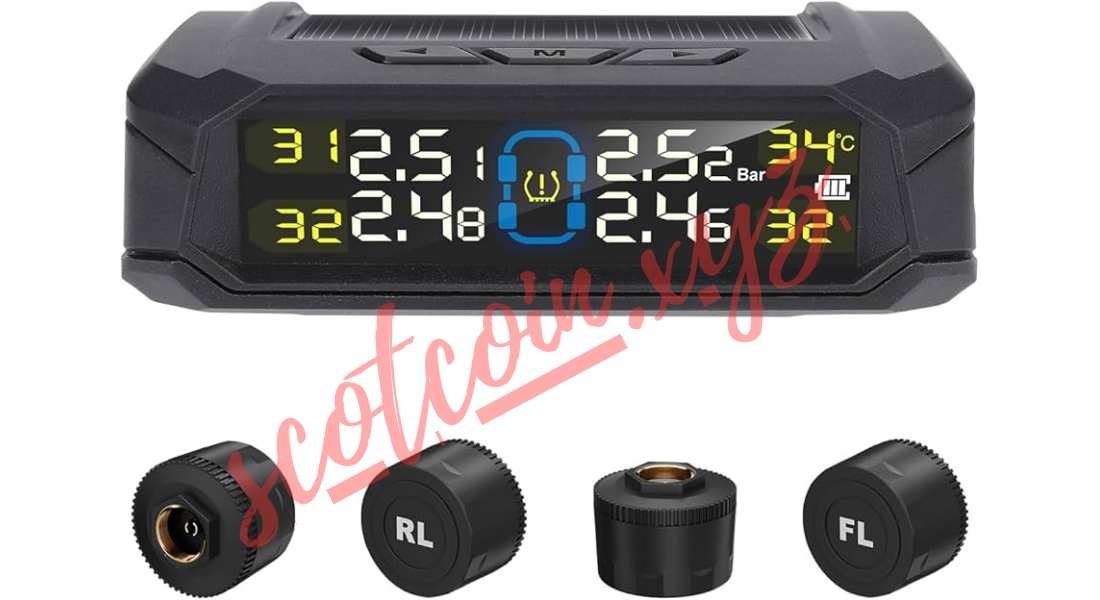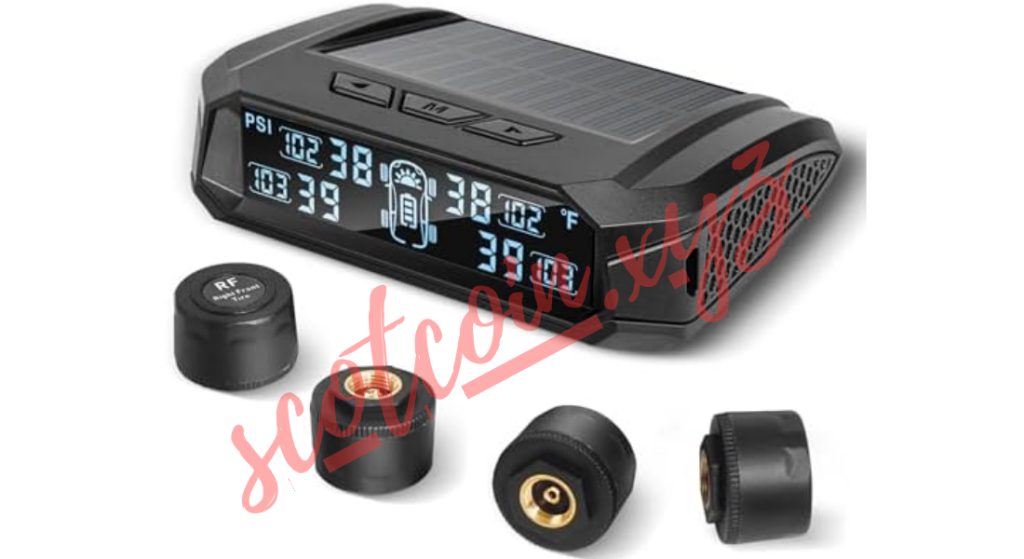Blog
A Modern Upgrade Why Wireless Wheel Sensors Are a Must Have
Keeping track of your car’s wheel performance is essential for a safe and efficient driving experience. That’s where wireless wheel sensors come in. These advanced sensors monitor wheel data like pressure, speed, and rotation, providing real-time insights that improve both safety and performance. With no wiring required, wireless wheel sensors are easy to install, delivering accurate data directly to your dashboard or mobile device. Here’s everything you need to know about these innovative sensors and why they’re becoming a must-have in modern vehicles.
What is a Wireless Wheel Sensor?
A wireless wheel sensor is a compact, high-tech device that attaches to your vehicle’s wheels, transmitting data wirelessly. Unlike traditional wired sensors, these gadgets monitor and share crucial wheel information, including tire pressure, temperature, speed, and wheel rotation. This real-time data helps you keep your vehicle in optimal condition and alerts you to issues before they become major problems. Wireless sensors are particularly valuable for drivers who prioritize safety, fuel efficiency, and the overall health of their vehicle.
Key Benefits of Wireless Wheel Sensors
Investing in wireless wheel sensors offers several advantages for both everyday drivers and car enthusiasts. Here’s why they’re becoming a popular addition:
- Enhanced Safety: By monitoring tire pressure and wheel rotation, wireless sensors alert you to changes that could impact safety, such as underinflation or overheating.
- Improved Fuel Efficiency: Proper tire pressure leads to better fuel economy, reducing the amount of fuel used and saving money over time.
- Early Detection of Issues: Wireless sensors provide real-time data that allows you to address potential issues early, avoiding costly repairs.
- Easy Installation: Since they don’t require complex wiring, wireless sensors are easy to install, making them ideal for DIY enthusiasts.
- Seamless Integration: Many wireless wheel sensors connect with mobile apps or in-car displays, making it easy to track data while you drive.
Top Features to Look for in a Wireless Wheel Sensor
When choosing the best wireless wheel sensor for your vehicle, consider the following features:
- Battery Life: Look for sensors with long-lasting batteries to avoid frequent replacements.
- Range and Signal Strength: Reliable sensors should maintain a strong connection between the wheels and the receiver, even in challenging conditions.
- Data Accuracy: High-quality sensors provide precise readings, ensuring you get accurate information about tire pressure, temperature, and speed.
- Compatibility with Devices: Some wireless sensors connect with smartphones or in-car displays, so choose one that works well with your setup.
- Durability: Since these sensors are exposed to harsh conditions, choose models that are weather-resistant and can withstand temperature changes.
How Wireless Wheel Sensors Work
Wireless wheel sensors operate through small transmitters attached to each wheel. These sensors continuously gather data, such as tire pressure and wheel rotation, and transmit this information to a central receiver, which could be a mobile app, a separate display, or the vehicle’s main dashboard. The sensors use radio frequency or Bluetooth to maintain a stable connection, ensuring data reaches you without delay.
Many wireless sensors come with an alert system that notifies you immediately of any critical changes. For example, if a tire’s pressure falls below a safe level or if there’s a sudden increase in temperature, the sensor will send an alert, helping you avoid potential hazards and costly repairs.

Popular Types of Wireless Wheel Sensors
There are various types of wireless wheel sensors available, each designed to suit different needs:
1. Tire Pressure Monitoring Sensors (TPMS): Essential for Maintaining Tire Health
TPMS sensors focus on monitoring tire pressure, providing real-time data to ensure optimal inflation levels. These sensors help improve fuel efficiency, extend tire life, and enhance safety. They are among the most popular wireless wheel sensors due to their significant impact on driving performance and safety.
2. Speed and Rotation Sensors: Ideal for Performance Monitoring
These sensors measure wheel rotation and speed, offering valuable data for high-performance vehicles. Speed and rotation sensors are useful for drivers who want precise handling, especially in sports cars or off-road vehicles. They also play a role in maintaining traction and stability, enhancing overall driving control.
3. Temperature Sensors: Essential for Overheating Prevention
Temperature sensors are important for monitoring heat buildup in tires, especially on long drives or in hot weather. Overheated tires can lead to blowouts or tread separation, making these wireless sensors a crucial addition for safety-conscious drivers.
How to Install a Wireless Wheel Sensor
Installing a wireless wheel sensor is usually straightforward, especially compared to traditional wired sensors. Here’s a quick guide:
- Prepare the Wheels: Clean the wheel area where you’ll be attaching the sensor to ensure a secure fit.
- Mount the Sensor: Attach the sensor to the tire valve or the wheel, following the manufacturer’s instructions. Most sensors screw onto the valve stem.
- Connect to the Receiver: Pair the sensor with the receiver, whether it’s a mobile app or an in-car display. Some sensors require a specific app download for proper connectivity.
- Test the Connection: Turn on the car and check the receiver to ensure the sensor data is transmitting correctly. Adjust if necessary for a clear signal.
Benefits of Using Wireless Wheel Sensors for Long-Distance Drivers
For those who often drive long distances, wireless wheel sensors provide added security and efficiency. Here’s how they benefit long-distance drivers:
- Reduced Maintenance: Real-time monitoring means fewer surprises and lower chances of emergency tire changes on the road.
- Peace of Mind: Continuous monitoring allows drivers to focus on the journey, knowing they’ll be alerted to any critical changes.
- Improved Tire Life: Long trips increase tire wear, but sensors help you maintain optimal tire conditions, extending their lifespan.
Choosing the Right Wireless Wheel Sensor for Your Car
Selecting the right wireless wheel sensor depends on your driving habits, vehicle type, and specific needs. Here are some tips to consider:
- Focus on Accuracy: High-quality sensors should provide precise readings; accurate data is essential for effective monitoring.
- Consider Environmental Factors: For off-road or extreme weather driving, invest in sensors with robust, weatherproof designs.
- Check Compatibility: Ensure the sensor integrates well with your vehicle’s system, whether that’s a mobile app or in-dash display.
Maintaining Your Wireless Wheel Sensors for Long-Term Use
To keep wireless wheel sensors in top condition, regular maintenance is essential:
- Replace Batteries as Needed: Sensors rely on batteries, so keep them charged or replace them regularly to ensure consistent performance.
- Clean Periodically: Dirt and debris can affect sensor readings, so clean the sensors when you rotate your tires or perform other maintenance.
- Test Regularly: Periodically check that the sensors are transmitting data accurately and adjust if needed.
Conclusion
Investing in a wireless wheel sensor offers peace of mind, improved safety, and enhanced vehicle performance. From tracking tire pressure to monitoring speed and temperature, these sensors provide essential insights that help you maintain your car’s wheels with ease. With options that cater to different driving needs and easy installation, wireless wheel sensors are an upgrade every driver should consider. Explore your options, choose a sensor that fits your lifestyle, and enjoy the confidence that comes from staying connected to your car’s essential wheel data.



